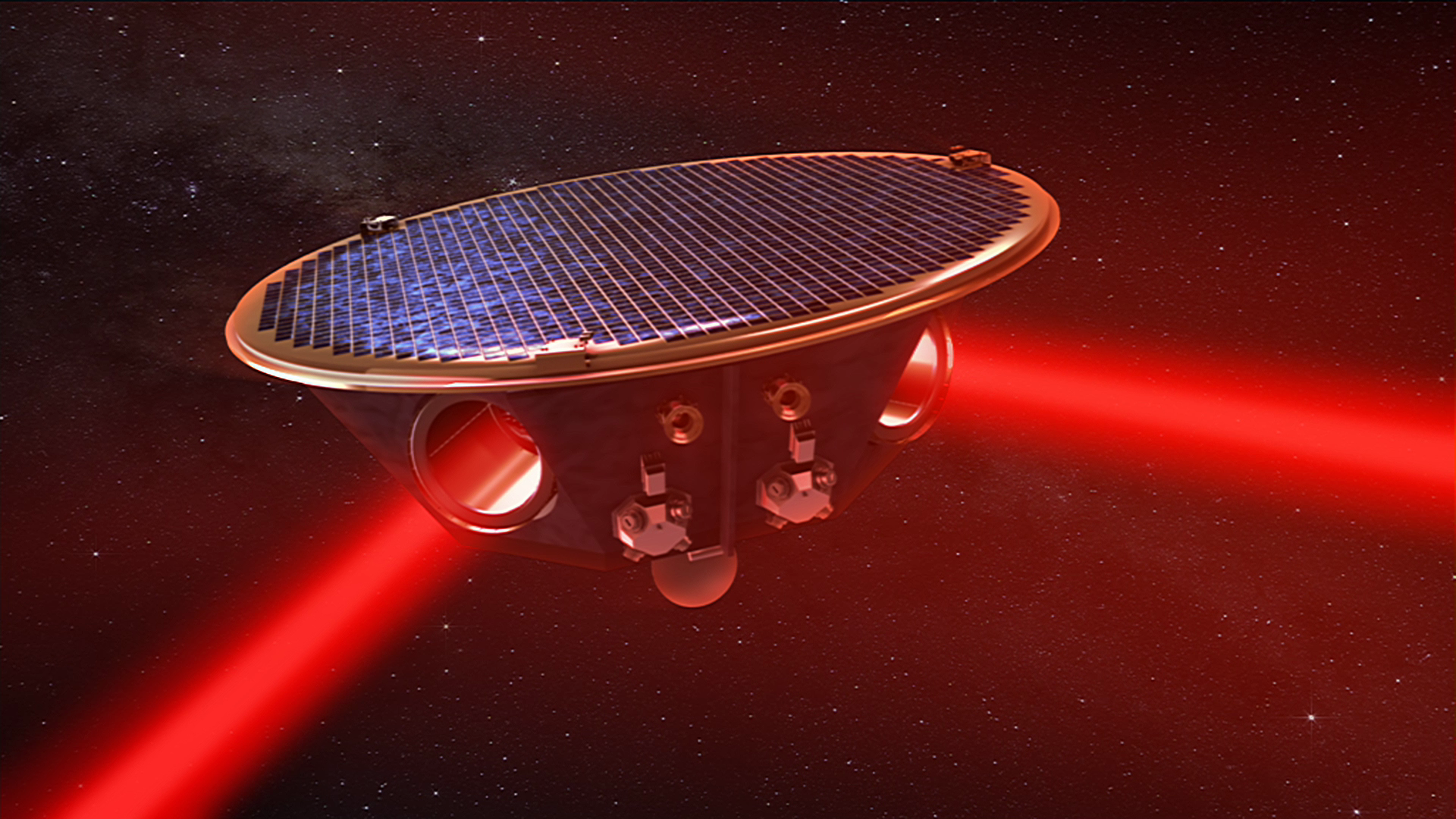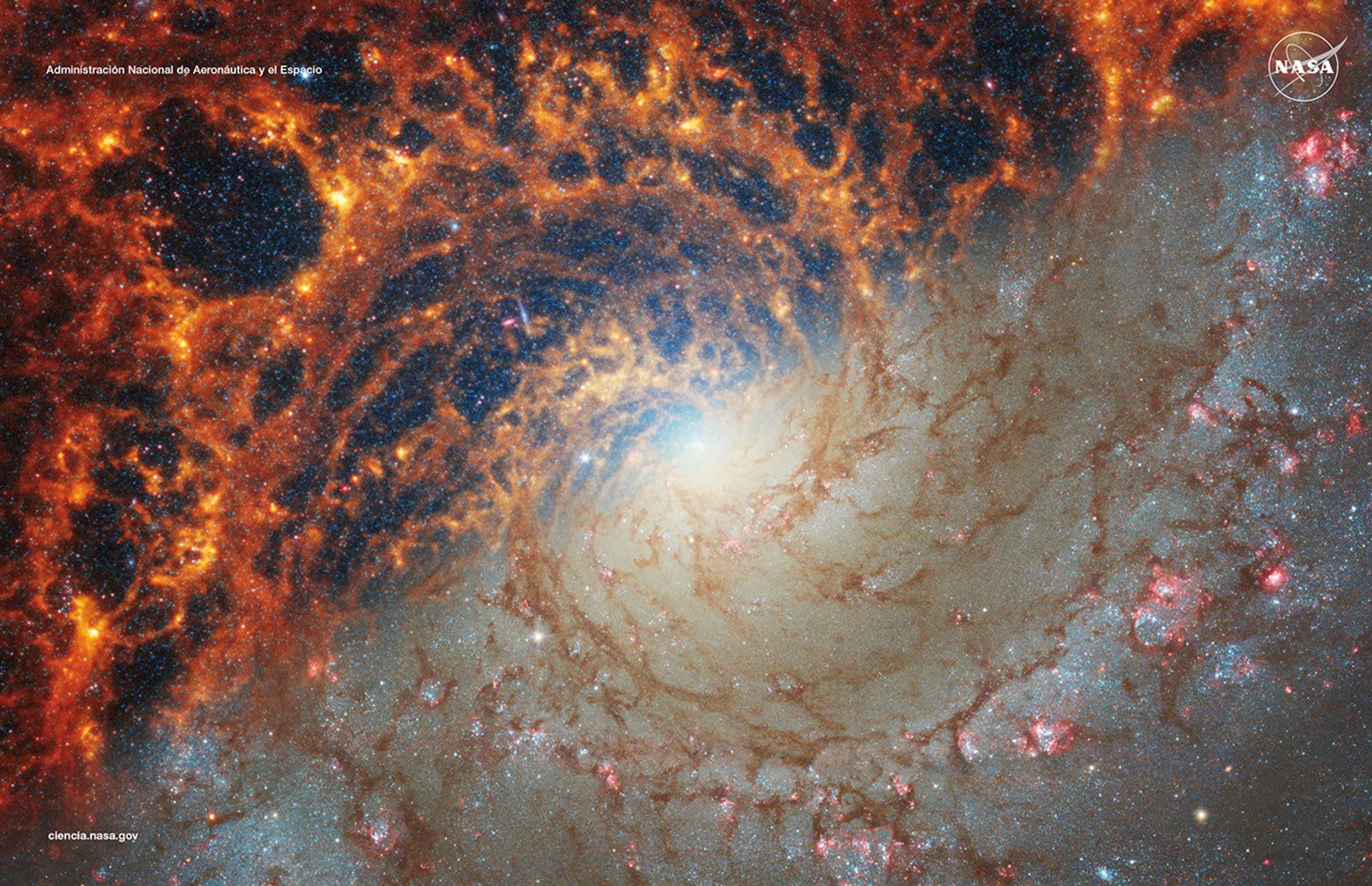Mission Studies
Gravitational Wave Mission Concepts Study
2012 Architecting Study
A study initiated by NASA's Physics of the Cosmos Program to develop mission concepts that could meet some or all of the objectives outlined in the New Worlds, New Horizons decadal report.
About Gravitational Wave Mission Concepts Study
New Mission Concepts to Meet New Objectives
The study began with the release of a formal Request for Information (RFI). In parallel, NASA released an open solicitation inviting members of the science community to participate in a Community Science Team (CST) for the X-ray mission.
A Physics of the Cosmos Program study team working with the CST identified the requirements relevant to each concept, defined the mission configuration options, executed mission design runs at mission design laboratories, refined the mission concepts, and drafted a mission concept study reports.
The Gravitational Wave Mission Concepts Workshop about New Mission Concepts to Meet New Objectives
NASA's Request for Information
The RFI, "Concepts for the NASA Gravitational Wave Mission," was released in the NASA NSPIRES Web site on 27 September 2011, as solicitation number NNH11ZDA019L. Responses were due by 20 November 2011. The full text of this NASA research opportunity is posted on the NASA NSPIRES web site.
JPL Team X for Gravitational Wave Mission Study
Study Summaries
| Title | Dates | Presentation |
|---|---|---|
| Team X Study of the SGO-Mid and SGO-High Options | 5-8 March 2012 | [PDF] |
| Team X Study of the LAGRANGE Mission | 20-22 March 2012 | [PDF] |
| Team X Study of the OMEGA Mission | 26-28 March / 3-5 April 2012 | [PDF] |
Final Study Reports
| Title | Dates | Presentation |
|---|---|---|
| Team X SGO-Mid and SGO-High Study Report | 6 September 2012 | [PDF] |
| Team X LAGRANGE Study Report | 6 September 2012 | [PDF] |
| Team X OMEGA Study Report | 6 September 2012 | [PDF] |
Community Science Team
NASA issued a call for Letters of Application for Membership in the Community Science Team (CST) for Gravitational Wave Mission Concepts. The "Dear Colleague" letter can be found HERE. The deadline for responding was 25 October at 4:30pm EST.
Community Science Team Members
| Name | Institution |
|---|---|
| Peter Bender | JILA / NIST |
| Joan Centrella | NASA / GSFC |
| Neil Cornish | Montana State University |
| Jens Gundlach | University Washington |
| Ronald Hellings | Montana State University |
| Guido Mueller | University of Florida |
| Holger Mueller | U. C. Berkeley |
| Thomas Prince | CalTech |
| Rainer Weiss | MIT (Co-Chair) |
| Edward Wright | UCLA (Co-Chair) |
Mission Concepts Submissions in Response to the RFI
| Title | Submitted by | Presentation |
|---|---|---|
| Instrument Control Unit (ICU) | Fritz, Hans | [PDF] |
| Space Communication Rates at Multi-GBPS | McIntyre, Todd | [PDF] |
| A non-drag-free gravitational wave mission architecture | Folkner, W.M. | [PDF] |
| A Geostationary Gravitational Wave Interferometer (GEOGRAWI) | Tinto, Massimo | [PDF] |
| Interferometer in Space for Detecting Gravity Wave Radiation using Lasers (InSpRL) | Saif, Babak N. | [PDF] |
| Interferometer in Space for Detecting Gravity Wave Radiation using Lasers (InSpRL), Updated Dec 9, 2011 | Saif, Babak N. | [PDF] |
| Simplified optical payload with digital interferometry | de Vine, Glenn | [PDF] |
| A Low-Cost, High-Performance Space Gravitational Astronomy Mission | Hellings, Ronald | [PDF] |
| Drag-Free Atomic Disturbance Reduction System for LISA-like Gravitational Wave Detection | Yu, Nan | [PDF] |
| Concept of Compact Highly-Sensitive Superconducting Antenna for Gravitational Wave Radiation | Gulian, A. | [PDF] |
| LAGRANGE: LAser GRavitational-wave ANtenna at GEo-lunar L3, L4, L5 | Conklin, John W. | [PDF] |
| New Sciencecraft and Test Mass Concepts for the LISA Mission | Shao, Michael | [PDF] |
| SGO Low: A LISA-Like Concept for the Space-based Gravitational-wave Observatory (SGO) at a Low Price-Point | Thorpe, J.I. | [PDF] |
| Lowest: A LISA-Like Concept for the Space-based Gravitational-wave Observatory (SGO) at the Lowest Cost-Point | Baker, John SGO | [PDF] |
| SGO High: A LISA-Like Concept for the Space-based Gravitational-wave Observatory (SGO) at a High Cost-Point | Stebbins, Robin | [PDF] |
| SGO Mid: A LISA-Like Concept for the Space-based Gravitational-wave Observatory (SGO) at a Middle Price-Point | Livas, Jeff | [PDF] |
| LAGRANGE:A Space-Based Gravitational Wave Detector with Geometric Suppression of Spacecraft Noise | McKenzie, Kirk | [PDF] |
| Geostationary Antenna for Disturbance-Free Laser Interferometry (GADFLI) | McWilliams, Sean T. | [PDF] |
Downloads
The 2012 Architecting Studies
NASA's Physics of the Cosmos (PhysCOS) Program initiated two studies to develop mission concepts that could meet some or all of the objectives outlined in the New Worlds, New Horizons decadal report for the areas of X-ray astronomy and gravitational-wave science. The PhysCOS Program worked with these communities to define mission concepts that achieve these science objectives at multiple price points.
This began with the release of a formal Request for Information (RFI) on each topic. In parallel, NASA released an open solicitation inviting members of the science community to participate in a Community Science Team (CST) for the X-ray mission or the gravitational-wave mission. The Program Office worked with each CST to review the RFI responses. In December 2012, workshops, which were open to the community, were held to discuss the RFI responses and define the mission concepts to be studied.
A PhysCOS Program study team, working with each CST, identified the requirements relevant to each concept, defined the mission configuration options, executed mission design runs at mission design laboratories, refined the mission concepts, and drafted a mission concept study reports.
News Straight to Your Inbox
Subscribe to your community email news list
We will never share your email address.



























